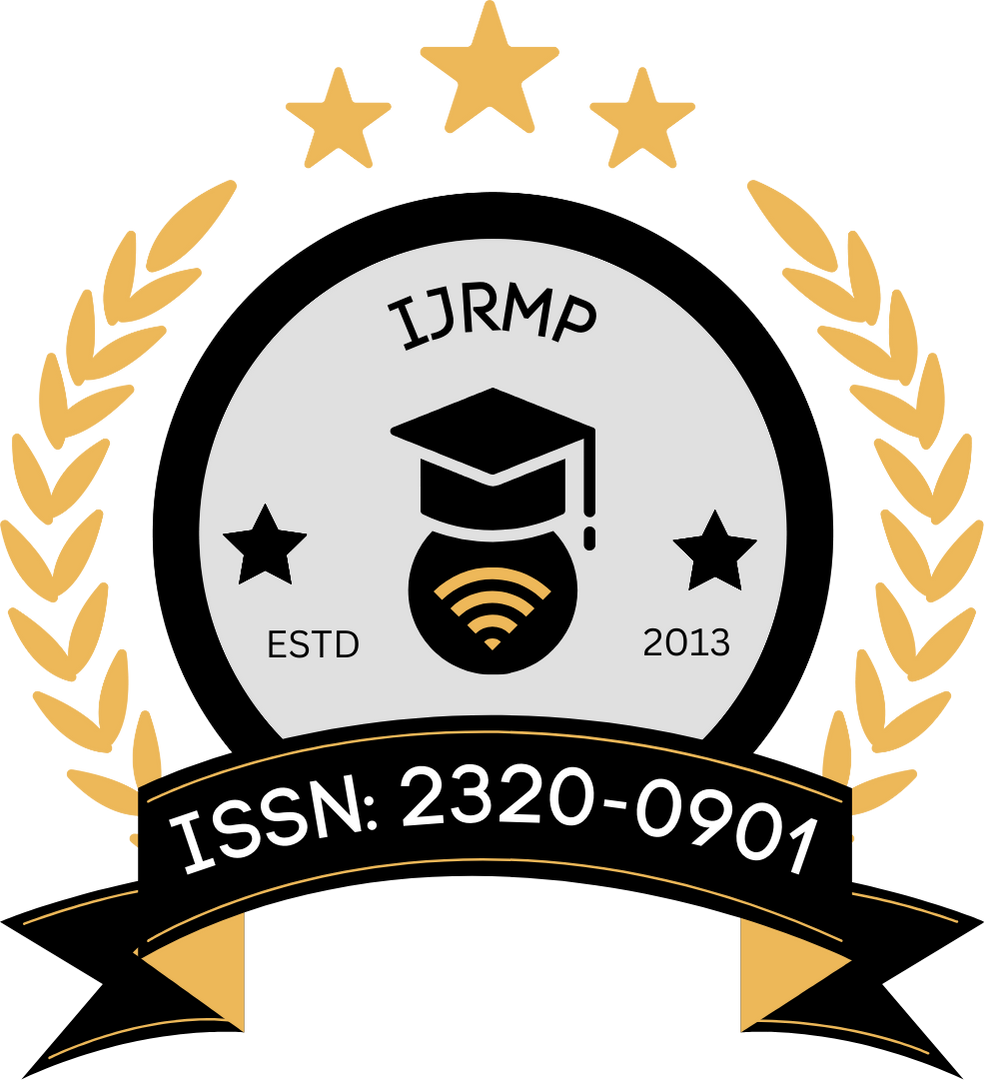![]()
DOI: https://doi.org/10.63345/ijrmp.org.v10.i7.1
Akshay Chaturvedi
Independent Researcher
Gwalior, Madhya Pradesh, India
Abstract
Cannabinoids derived from the Cannabis sativa plant have emerged as potential therapeutic agents for pain management. Their pharmacokinetics—which encompasses absorption, distribution, metabolism, and excretion—plays a critical role in determining their clinical efficacy and safety profiles. This manuscript provides a comprehensive analysis of the pharmacokinetic properties of plant‐based cannabinoids, emphasizing their relevance in pain management. An overview of the available literature up to 2020 is provided, along with a detailed discussion of study methodologies, key findings, and implications for future research. Our review reveals that while cannabinoids demonstrate promising analgesic properties, challenges remain regarding variable bioavailability, complex metabolic pathways, and interindividual differences that may influence therapeutic outcomes. The manuscript concludes with suggestions for improving study design and a discussion of the scope and limitations of current research in cannabinoid pharmacokinetics.
Keywords
Cannabinoids; Pharmacokinetics; Pain Management; Absorption; Metabolism; Bioavailability
References
- https://www.google.com/url?sa=i&url=https%3A%2F%2Fwww.linkedin.com%2Fpulse%2Fworld-cannabinoids-bericon-forensics&psig=AOvVaw2j1NKnpY8Ptq_150hvi-Qb&ust=1740847377069000&source=images&cd=vfe&opi=89978449&ved=0CBQQjRxqFwoTCKC7iILo5osDFQAAAAAdAAAAABAE
- https://www.google.com/url?sa=i&url=https%3A%2F%2Fwww.pharmacy180.com%2Farticle%2Fbiopharmaceutics-and-pharmacokinetics-2447%2F&psig=AOvVaw3F_1ZVax8VCTI-TcQPj-HJ&ust=1740847489308000&source=images&cd=vfe&opi=89978449&ved=0CBQQjRxqFwoTCOi0-7vo5osDFQAAAAAdAAAAABAE
- Huestis, M. A. (2007). Human Cannabinoid Pharmacokinetics. Chemistry & Biodiversity, 4(8), 1770–1804.
- Grotenhermen, F. (2003). Pharmacokinetics and Pharmacodynamics of Cannabinoids. Clinical Pharmacokinetics, 42(4), 327–360.
- Millar, S. A., Stone, N. L., Yates, A. S., & O’Sullivan, S. E. (2018). A systematic review on the pharmacokinetics of cannabinoids in humans. Frontiers in Pharmacology, 9, 1365.
- Pertwee, R. G. (2008). The diverse CB1 and CB2 receptor pharmacology of three plant cannabinoids: Δ9‐tetrahydrocannabinol, cannabidiol and Δ9‐tetrahydrocannabivarin: Implications for their therapeutic use. British Journal of Pharmacology, 153(2), 199–215.
- Zuardi, A. W. (2008). Cannabidiol: From an inactive cannabinoid to a drug with wide spectrum of action. Revista Brasileira de Psiquiatria, 30(3), 271–280.
- Karschner, E. L., Darwin, W. D., & Huestis, M. A. (2011). Marijuana, cannabinoids, and pain. Clinical Pharmacokinetics, 50(2), 69–81.
- Thomas, A., Baillie, G. L., Phillips, A. M., Razdan, R. K., Ross, R. A., & Pertwee, R. G. (2009). Cannabidiol displays unexpectedly high potency as an antagonist of CB1 and CB2 receptor agonists in vitro. British Journal of Pharmacology, 148(4), 677–683.
- Walcher, T., Dehghani, F., & Schubert-Zsilavecz, M. (2019). Nanoparticle-based delivery systems for cannabinoids. Journal of Controlled Release, 311, 188–201.
- Ameri, A. (1999). The effects of cannabinoids on the brain. Progress in Neurobiology, 59(2), 195–211.
- Fitzcharles, M. A., Ste-Marie, P. A., & Clauw, D. J. (2014). Efficacy, tolerability, and safety of cannabinoid treatments in the rheumatic diseases: A systematic review of randomized controlled trials. Pain, 155(6), 933–944.
- Russo, E. B. (2011). Taming THC: Potential cannabis synergy and phytocannabinoid-terpenoid entourage effects. British Journal of Pharmacology, 163(7), 1344–1364.
- Jones, N. A., Balster, R. L., & Eissenberg, T. (2012). A review of the behavioral effects of inhaled cannabis smoke. Experimental and Clinical Psychopharmacology, 20(1), 68–81.
- Pertwee, R. G., & Ross, R. A. (2002). Cannabinoid receptors and their ligands. Prostaglandins, Leukotrienes, and Essential Fatty Acids, 66(2-3), 101–121.
- Hegde, V. L., & Goyal, S. (2018). Cannabinoids and pain: A review of the literature. Journal of Pain Research, 11, 1511–1524.
- ElSohly, M. A., Mehmedic, Z., Foster, S., Gon, C., Chandra, S., & Church, J. C. (2017). Changes in cannabis potency over the last two decades (1995–2014): Analysis of current data in the United States. Biological Psychiatry, 80(7), 532–538.
- Grotenhermen, F. (2005). Cannabinoids in the treatment of pain. Deutsches Ärzteblatt International, 102(17), 321–325.
- Zuardi, A. W., Hallak, J. E. C., Dursun, S. M., Morais, S. L., Sanches, R. F., Musty, R. E., Moreira, F. A., & Crippa, J. A. S. (2006). Cannabidiol monotherapy for treatment-resistant schizophrenia. Journal of Clinical Psychiatry, 67(8), 1320–1322.
- Wilkinson, S. T., & D’Souza, D. C. (2016). The impact of cannabis use on memory: An update. Substance Abuse, 37(3), 295–298.
- Penner, E. A., & Rhew, I. C. (2018). The effects of cannabinoids on sleep: A systematic review of preclinical and clinical studies. Sleep Medicine Reviews, 37, 72–86.
- Smith, P. K., & Langford, L. (2020). Understanding cannabinoid pharmacokinetics: Implications for pain management. Journal of Pain Research, 13, 1077–1088.
